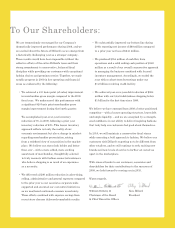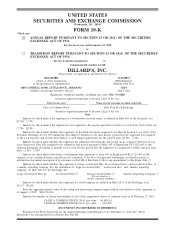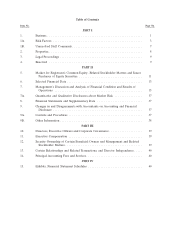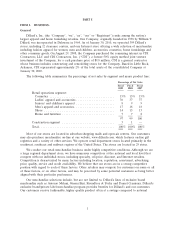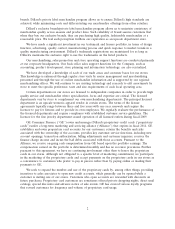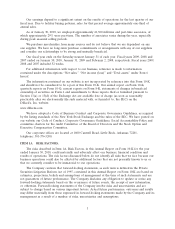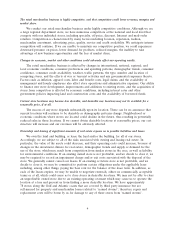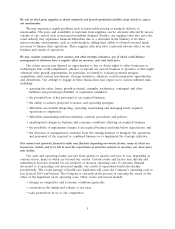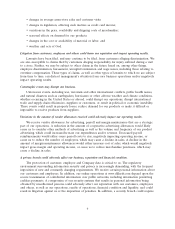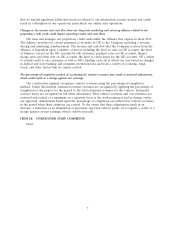Dillard's 2009 Annual Report Download - page 11
Download and view the complete annual report
Please find page 11 of the 2009 Dillard's annual report below. You can navigate through the pages in the report by either clicking on the pages listed below, or by using the keyword search tool below to find specific information within the annual report.that we expend significant additional resources related to our information security systems and could
result in a disruption of our operations, particularly our online sales operations.
Changes in the income and cash flow from our long-term marketing and servicing alliance related to our
proprietary credit cards could impact operating results and cash flows.
GE owns and manages our proprietary credit cards under the Alliance that expires in fiscal 2014.
The Alliance provides for certain payments to be made by GE to the Company, including a revenue
sharing and marketing reimbursement. The income and cash flow that the Company receives from the
Alliance is dependent upon a number of factors including the level of sales on GE accounts, the level
of balances carried on the GE accounts by GE customers, payment rates on GE accounts, finance
charge rates and other fees on GE accounts, the level of credit losses for the GE accounts, GE’s ability
to extend credit to our customers as well as GE’s funding costs, all of which can vary based on changes
in federal and state banking and consumer protection laws and from a variety of economic, legal,
social, and other factors that we cannot control.
The percentage-of-completion method of accounting for contract revenues may result in material adjustments,
which could result in a charge against our earnings.
Our construction segment recognizes contract revenues using the percentage-of-completion
method. Under this method, estimated contract revenues are recognized by applying the percentage of
completion of the project for the period to the total estimated revenues for the contract. Estimated
contract losses are recognized in full when determined. Total contract revenues and cost estimates are
reviewed and revised at a minimum on a quarterly basis as the work progresses and as change orders
are approved. Adjustments based upon the percentage of completion are reflected in contract revenues
in the period when these estimates are revised. To the extent that these adjustments result in an
increase, a reduction or an elimination of previously reported contract profit, we recognize a credit or a
charge against current earnings, which could be material.
ITEM 1B. UNRESOLVED STAFF COMMENTS.
None.
7


